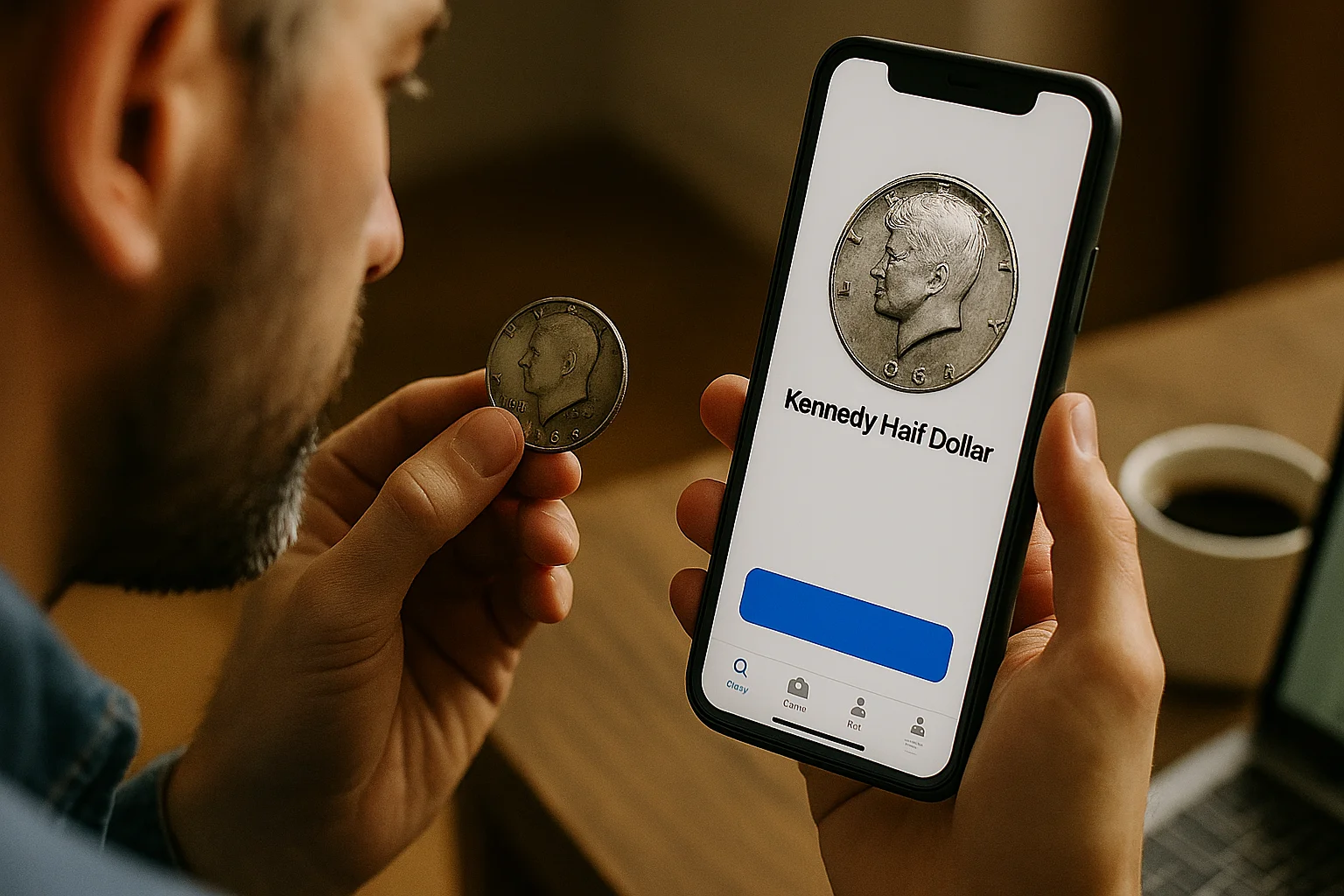If you’ve ever stumbled across a Kennedy half dollar with the dual date 1776 to 1976, you might be holding something more interesting than spare change. While many of these coins were made for everyday circulation, others were minted for collectors—and depending on the type, the 1776 to 1976 half dollar value could range from fifty cents to several dollars or more. But what exactly determines its worth? Let’s start at the beginning.
Why Was the Bicentennial Half Dollar Created?
In 1976, the United States marked its 200th birthday with an unprecedented celebration — and the U.S. Mint joined in by releasing a special edition of its most iconic coins: the quarter, half dollar, and dollar. The Kennedy half dollar received a patriotic makeover for the occasion. Instead of the standard presidential seal on the reverse, the coin featured a detailed image of Independence Hall in Philadelphia, designed by Seth G. Huntington.
This was no ordinary coin. Unlike most U.S. coins that feature only a single year, the Bicentennial half dollar was stamped with 1776–1976 to mark two centuries of American independence. The design change was temporary — used only during 1975 and 1976 — and gave the coin instant historical appeal. Even today, it remains a favorite among collectors, both for its unique design and nostalgic symbolism.

Clad, Silver, or Proof? Types of 1776–1976 Half Dollars
Not all Bicentennial half dollars are equal. There are three main types:
- Clad (copper-nickel): These were made for general circulation and are the most common type. If you’ve found a Bicentennial half dollar in your pocket change, it is likely clad.
- 40% Silver: These were struck for collector sets and never released into general circulation. They contain 40% silver content, making them more valuable for both collectors and bullion lovers.
- Proof Coins: These are high-quality collector versions, often with mirror-like surfaces, struck in San Francisco with great detail. Some are clad, others are silver — both are collectible, but silver proofs are usually worth more.
Quick Tip: How to Tell Silver from Clad
You don’t need to melt your coin to figure out what it’s made of. Here are some quick ways to identify whether your Bicentennial half dollar is silver:
- Edge check: Look at the edge of the coin. If you see a distinct copper-colored strip, it’s clad. If it appears solid silver or has only a faint difference in tone, it may be the 40% silver version.
- Mint mark: Only half dollars with an “S” mint mark (from San Francisco) have a chance of being 40% silver. Coins with no mint mark or a “D” were minted in Philadelphia and Denver, respectively, and are copper-nickel clad.
- Weight: Silver coins weigh slightly more — 11.5g vs. 11.34g for clad.
Mint Marks, Errors, and Market Value Secrets
By now, you know that not all 1776–1976 half dollars are worth the same. But what exactly turns an ordinary 50-cent piece into a coin worth several dollars — or even hundreds? It often comes down to a few small details: mint marks, rare minting errors, and overall condition. Let’s break it down.
Mint Marks: Small Letters, Big Clues
Mint marks are tiny letters stamped on coins to show where they were made. For the Bicentennial Kennedy half dollar, there are three possibilities:
- No mint mark – Philadelphia Mint
- “D” – Denver Mint
- “S” – San Francisco Mint
You can find the mint mark just above the date on the coin’s obverse (front), below Kennedy’s neck.
Why does this matter? Because only coins with the “S” mint mark were minted in 40% silver versions, and those weren’t released into general circulation. So if you spot an “S” on your coin, it’s worth taking a closer look — it might belong to a collector set and have more value than face.
Minting Errors and Varieties: The Hidden Treasures
Every now and then, the U.S. Mint makes a mistake — and that’s great news for collectors. These minting errors can turn a common coin into something truly rare.
Here are some known error types found on 1776–1976 half dollars:
- Double die obverse (DDO): Parts of the design, like the lettering or date, appear slightly doubled.
- Off-center strike: The image is not centered on the coin, leaving a blank crescent edge.
- Clipped planchet: A small piece is missing from the edge of the coin.
- Missing clad layer: Reveals the copper core, creating a noticeable two-tone effect.
These errors are not extremely common, but when found in good condition, they can be worth anywhere from $50 to over $500, depending on rarity and visual appeal.
Quick tip: Use technology to your advantage. If you are unsure whether your coin is valuable or if it might have a rare error, try a tool like the Coin ID Scanner app. It lets you photograph your coin and compare it to known varieties, instantly flagging potential value. The app can be your assistant to get started without needing expert-level knowledge.

Smart Collecting: Tips, Traps, and Final Thoughts
So, you’ve learned about the types, mint marks, and even rare errors that can make a 1776–1976 half dollar worth more than face value. But how do you go from curious owner to confident collector?
What to Watch For (and What to Avoid)
If you’re thinking about buying or collecting Bicentennial half dollars, a few smart habits will go a long way:
- Don’t overpay for common coins. Millions of clad Bicentennial half dollars were minted. Unless it’s in exceptional condition, silver, or has an error, don’t spend more than a couple dollars on one.
- Prioritize condition. A 40% silver coin in Mint State (MS-65 or better) is always more desirable than a circulated one. Look for sharp details, clean surfaces, and minimal wear.
- Verify silver content. Just because a seller says it’s silver doesn’t make it so. Only coins with the “S” mint mark (and usually part of collector sets) were minted in 40% silver. Check weight and edge coloring if you’re unsure.
- Start small. You don’t need to build a massive collection. Even just gathering one of each type (clad, silver, proof) makes for a fun and meaningful set.
Bonus Tip: Keep a small notebook or digital tracker of your coins—where you found them, the condition, and value range. It adds structure to your collecting hobby and helps avoid repeat purchases.
Protect the Value of Your Coins
How you store your coins can make or break their long-term value. Here are a few golden rules:
- Use non-PVC holders like archival-safe flips or capsules. PVC can cause chemical damage (a sticky green film) over time.
- Avoid touching coins directly. Natural oils from your fingers can leave marks that degrade a coin’s grade.
- Keep them dry and cool. Humidity and temperature changes can lead to oxidation, especially with silver.
- Label everything. If you have a silver proof, note it! Good labeling can help when selling or passing your collection to others.
Investing a few dollars in quality storage can preserve the value of your coins for decades.
More Than Just Spare Change
The Bicentennial half dollar is more than a commemorative coin — it is a tiny piece of American history. Its double-dated design, iconic imagery, and varied types make it a fascinating first step into the world of coin collecting.
And the best part is that you don’t need to be an expert or spend thousands to get started. Sometimes a single coin in your pocket change could spark a lifelong hobby — or even hide a small jewel.

